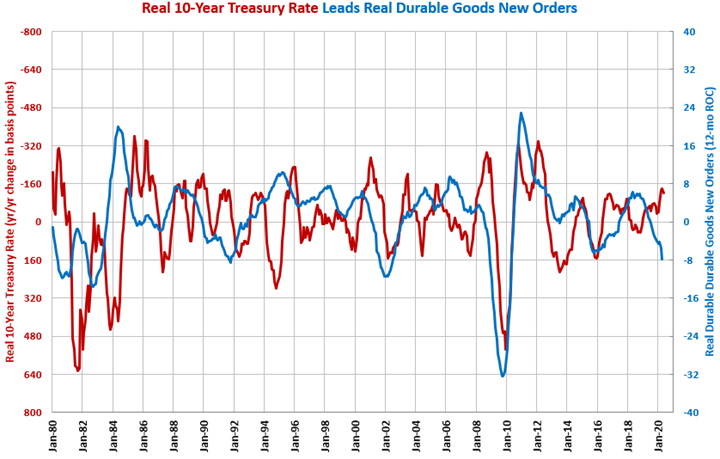Change in 10-Year Treasury Rate Negative for 17th Month
In May, the nominal 10-year Treasury rate was 0.67%, which was the third month in a row and the third month ever that the monthly average was below 1%. Also, this month’s rate was just 0.01 basis points more than last month.
In May, the nominal 10-year Treasury rate was 0.67%, which was the third month in a row and the third month ever that the monthly average was below 1%. Also, this month’s rate was just 0.01 basis points more than last month.
The real 10-year Treasury rate, which is the nominal rate minus the rate of inflation, was -0.98%. This was the fifth consecutive month and eight of the last 10 that the real rate was negative. The real rate would have been even lower except the inflation rate has fallen significantly. In May, the annual rate of inflation was just 0.12%, which was the lowest rate since September 2015.
In May, the year-over-year change in the real rate was -121 basis points. The change was negative for the 17th month in a row.

A falling change in the real 10-year Treasury rate tends to be a positive signal for durable goods manufacturing. Declining changes in the real 10-year Treasury rate tend to lead growth in durable goods new orders and capital equipment consumption by a relatively long period of time – historically, between 12 and 24 months. The declining change in the 10-year Treasury rate is a good leading indicator of growth in housing permits, construction spending and consumer durable-goods spending as well.
However, businesses and consumers are tightening their spending due to the COVID-19 pandemic, which means the typical correlation of a lower 10-year Treasury and growth in the above metrics may not occur.




.JPG;width=70;height=70;mode=crop)
